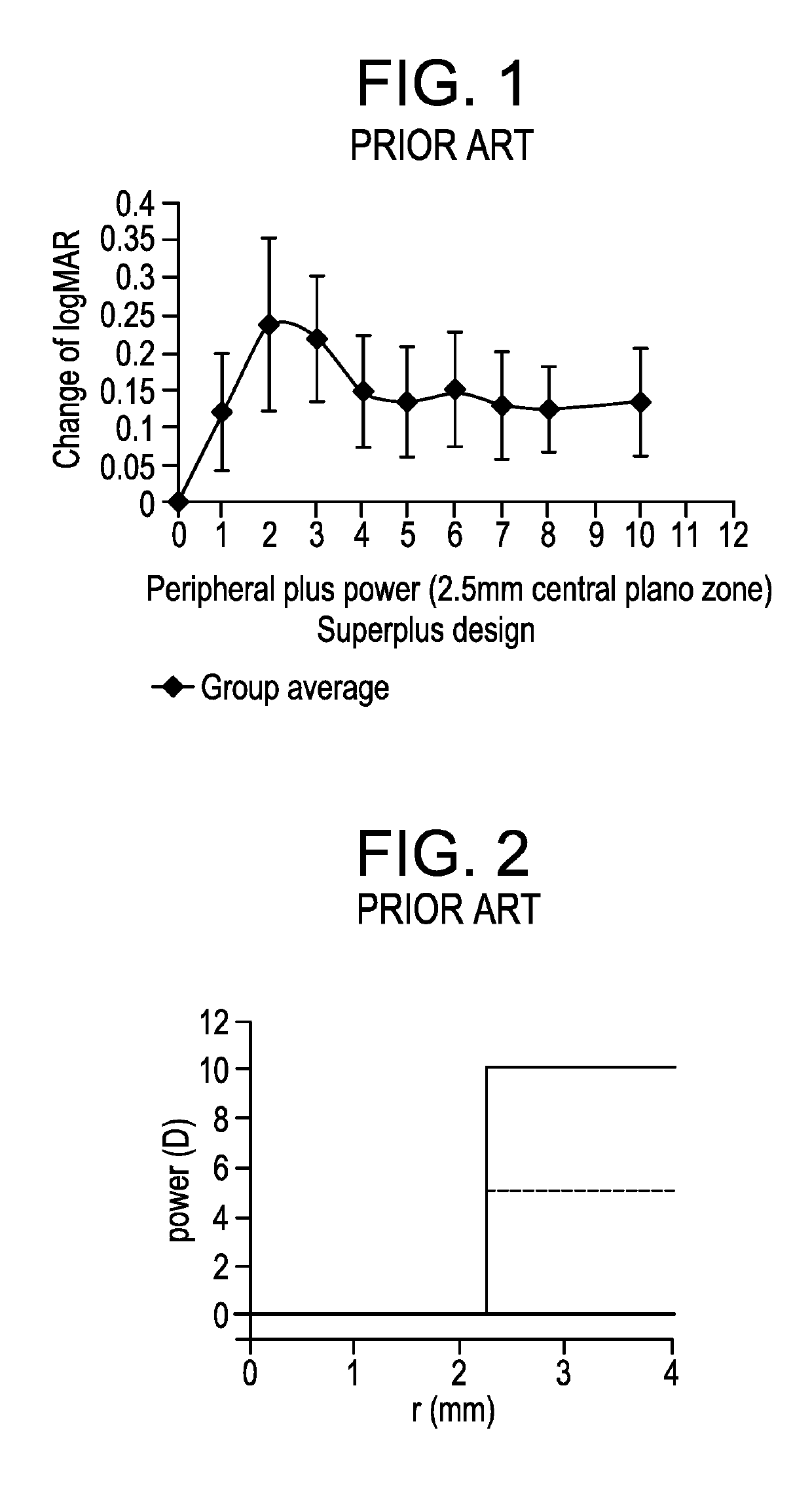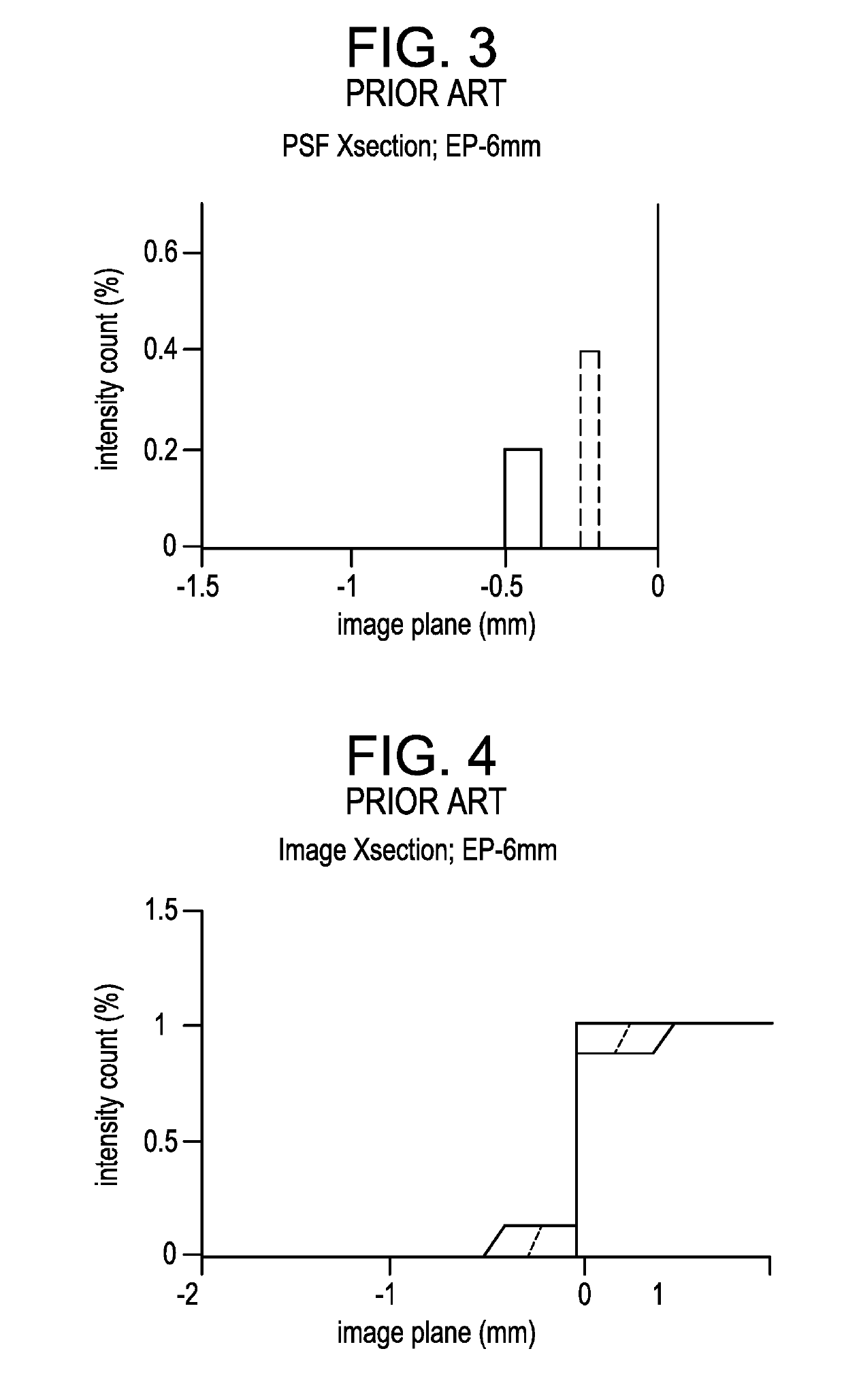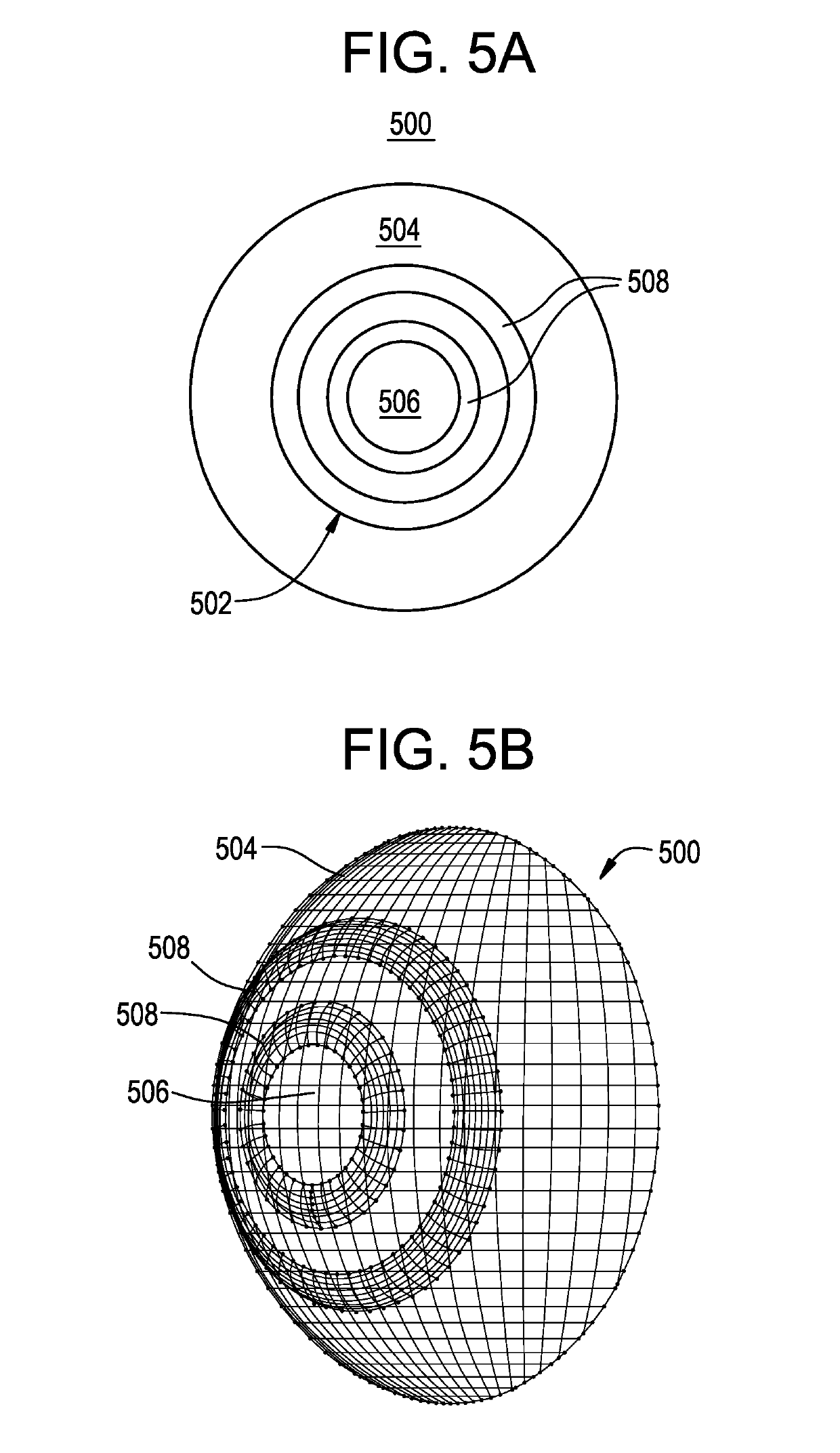Ophthalmic lens with an optically non-coaxial zone for myopia control
a technology of optical non-coaxial zone and ophthalmic lens, which is applied in the field of ophthalmic devices, can solve the problems of hyperopia, eye growth is not enough, and the eye is not growing long enough, so as to slow down, retard or prevent myopia progression, and slow down the effect of myopia progression
- Summary
- Abstract
- Description
- Claims
- Application Information
AI Technical Summary
Benefits of technology
Problems solved by technology
Method used
Image
Examples
Embodiment Construction
[0076]Ophthalmic devices may include implantable devices and / or wearable devices, such as contact lenses. Conventional contact lenses comprise polymeric structures with specific shapes to correct various vision problems.
[0077]As part of a typical eye examination the Eye Care Professional may determine the contact lens prescription required to correct the patients' refractive error. This prescription may specify the refractive power, cylindrical power, and / or cylinder axis of the contact lens, which may be used in determining the design or selection of a design of a contact lens.
[0078]Optical function of a radially concentric multizone ophthalmic lens that serves at least a spherical correction purpose is most generally derived from a front and back surface. One of these surfaces may be spheroidal or ellipsoidal in nature. The other surface typically has a spheroidal or ellipsoidal cap and then one or more curved portions, each of which is the surface of a spheroidal or ellipsoidal f...
PUM
 Login to View More
Login to View More Abstract
Description
Claims
Application Information
 Login to View More
Login to View More - R&D
- Intellectual Property
- Life Sciences
- Materials
- Tech Scout
- Unparalleled Data Quality
- Higher Quality Content
- 60% Fewer Hallucinations
Browse by: Latest US Patents, China's latest patents, Technical Efficacy Thesaurus, Application Domain, Technology Topic, Popular Technical Reports.
© 2025 PatSnap. All rights reserved.Legal|Privacy policy|Modern Slavery Act Transparency Statement|Sitemap|About US| Contact US: help@patsnap.com



